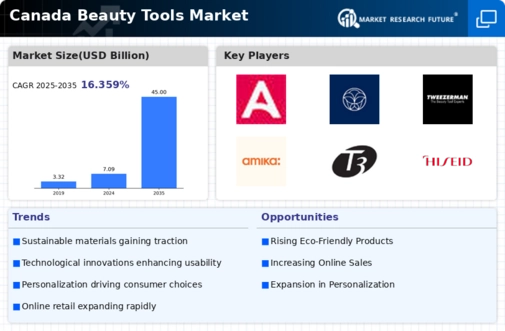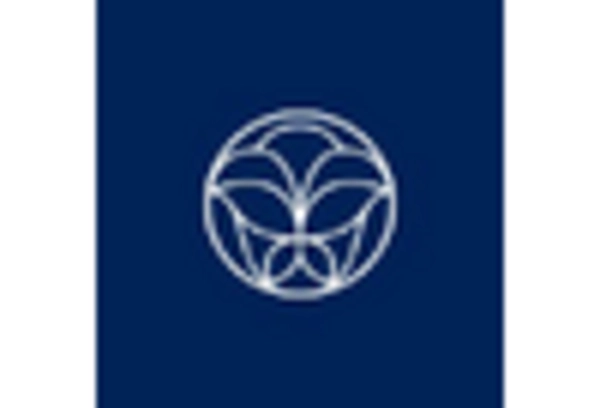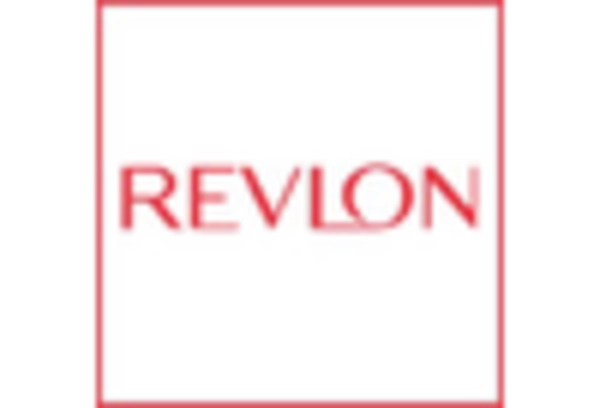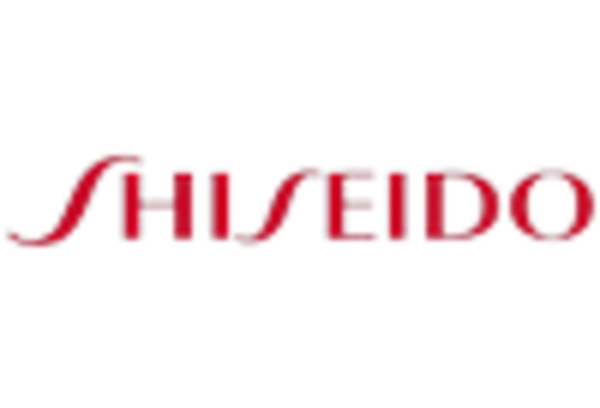The beauty tools market in Canada is characterized by a dynamic competitive landscape, driven by innovation, consumer demand for quality, and the increasing integration of technology in beauty routines. Major players such as Procter & Gamble (US), Estée Lauder (US), and L'Oréal (FR) are at the forefront, each adopting distinct strategies to enhance their market presence. Procter & Gamble (US) focuses on sustainability and eco-friendly product lines, which resonates with the growing consumer preference for environmentally conscious brands. Estée Lauder (US) emphasizes digital transformation, leveraging e-commerce and social media to engage with younger demographics. L'Oréal (FR) is heavily investing in research and development, particularly in AI-driven beauty tools, which positions it as a leader in innovation within the sector. Collectively, these strategies contribute to a competitive environment that is increasingly centered around technological advancement and consumer engagement.
Key business tactics employed by these companies include localizing manufacturing to reduce costs and optimize supply chains, which is particularly relevant in the current economic climate. The market structure appears moderately fragmented, with a mix of established brands and emerging players vying for market share. The influence of key players is substantial, as they set trends and standards that smaller companies often follow, thereby shaping the overall market dynamics.
In October 2025, Procter & Gamble (US) announced a partnership with a leading tech firm to develop smart beauty tools that utilize AI for personalized skincare recommendations. This strategic move is likely to enhance consumer experience and drive sales, as personalized solutions are increasingly sought after in the beauty industry. The collaboration underscores Procter & Gamble's commitment to innovation and positions it to capture a larger share of the tech-savvy consumer segment.
In September 2025, Estée Lauder (US) launched a new line of beauty tools designed specifically for the Asian market, incorporating local beauty rituals and preferences. This regional expansion strategy not only diversifies their product offerings but also allows Estée Lauder to tap into the lucrative Asian beauty market, which is known for its high demand for innovative beauty solutions. Such targeted approaches may strengthen brand loyalty and increase market penetration.
In August 2025, L'Oréal (FR) unveiled a new AI-driven beauty app that integrates with its beauty tools, providing users with tailored skincare routines based on their unique skin types. This initiative reflects L'Oréal's focus on digitalization and consumer engagement, potentially setting a new standard for how beauty brands interact with their customers. By enhancing the user experience through technology, L'Oréal is likely to solidify its competitive edge in the market.
As of November 2025, current trends in the beauty tools market include a pronounced shift towards digitalization, sustainability, and the integration of AI technologies. Strategic alliances are becoming increasingly important, as companies collaborate to enhance their technological capabilities and expand their product offerings. Looking ahead, competitive differentiation is expected to evolve, with a greater emphasis on innovation and technology rather than solely on price. The ability to provide reliable supply chains and cutting-edge products will likely define success in this rapidly changing landscape.

















Leave a Comment